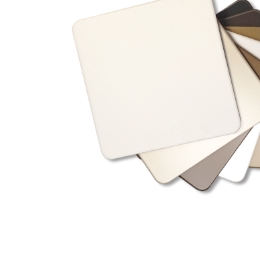In Situ. How a little Latin could save you thousands on your next project.

By Jack Finn, Specialty Manager, ALPOLIC
(Read this document in PDF)
Demand a warranty that stands behind its product.
We’ll admit the fine print on finish warranties is not the most riveting reading material. If it’s reviewed at all, it’s often a high-level look at the terms, like how many years the policy covers a panel and, potentially, its finish. Too often an architect requires a warranty based on length rather than content. Knowing “what” is warranted is as important as how long it is warranted, and the coverage says a lot about the manufacturer’s faith in the products it sells.
Not all warranties are created equal.
ALPOLIC Metal Composite Material (MCM) is backed by one of the strongest Repair and Replace warranties in the business thanks to an easily overlooked Latin phrase. Here’s an excerpt from our 20-year Coating Warranty: “MCA’s exclusive liability under this warranty, or otherwise, will be limited to refinishing, repairing or replacing in situ, at MCA’s sole option, the defective coated metal.”
In situ is the key to our warranty’s value.
A Latin phrase meaning “in place”, these two words make all the difference. In the event you ever have to execute a warranty claim, some MCM manufacturers will only cover the cost of the MCM. Others will only cover a prorated portion of the MCM cost over the lifetime of the warranty period. The bulk of the replacement or repair costs would then fall on the building owner.
Typically, such warranty details are moved to the second page of a lengthy warranty document and often ignored. But closer inspection may reveal such statements as Material Only, No Labor or Refund Purchase Price. This is a red flag that the warranty is only covering a small portion of the replacement costs. Repair and Replace is your protection against unwanted and undeserved replacement costs for non-performing materials.
There are three common types of panel warranty coverage.
1. Prorated Material Cost: The value of the warranty coverage begins with the material purchase cost, but decreases over the time limit of the warranty. A prorated warranty executed at the end of the warranty time limit gets very little back.
2. Material Only: The original purchase price for the material is covered over the warranty time limit. However, the cost of materials increases over time and this may not cover the current MCM cost, let alone the other costs associated with remediation.
3. Repair and Replace: This warranty covers repair or replacement costs over the time limit of the warranty. The cost of the material is not prorated. The value of the material is not lessened by inflation. This warranty covers the costs of the current value of the material, the removal of the wall panels, and fabrication and installation of the new panels.
What does that difference look like? We invite you to use the calculator on our website to estimate the lifetime value of your warranty.
Fill in the expected total project square footage, the estimated square foot cost of the MCM and its fabrication and installation cost. Warranty length and inflation value can be modified if you choose. The chart will then automatically propagate the expected warranty value over time, comparing the three types of warranty coverage. Is this what your client is expecting?
Calculate the Value of Your Warranty.
Before your next MCM purchase, know that you deserve a warranty that stands firmly behind its material. You deserve to know more than the length of warranty. Ask for Repair and Replace, with clearly stated exclusions. A simple heading at the top of the document stating “number of years of warranty” will not protect your client.

Jack Finn, the Eastern North American Specialty Sales Manager for ALPOLIC Materials, has been working in the building sales industry for more than 25 years. With extensive experience in corporate identity program management for the building envelope, he knows how important it is to get the right look and have it last.
Learn more about finishes in the rest of our three-part series.
Part 1: Polyester Versus Fluoropolymer Paint in Interior or Exterior Applications.
Part 3: Measuring color difference is important because close enough doesn’t cut it.






